Utensils for the oven: what should you use to cook baked goods, meat, vegetables?
Content:
Utensils for the oven can be specialized or universal. For example, clay pots, a cocotte maker, a casserole maker, a tagine, a roasting pan, various molds and a familiar baking sheet are specifically designed for the oven. But you can also use any other utensils, with the exception of wood, plastic and some other types.
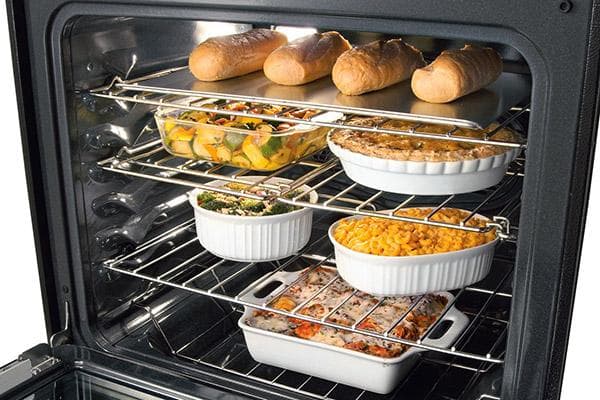
Special dishes
Many housewives limit themselves to using only one baking sheet and several baking dishes. Meanwhile, ovenware is a fairly large group of products. Special containers help to reveal the full potential of the oven and give dishes a unique flavor.
Cocotte
A small cup with a handle is made of metal, glass or ceramic. It makes mushroom and chicken julienne, seafood julienne, and eggs benedict. The cocotte maker also produces delicious portioned casseroles.
Gusyatnitsa
An oval-shaped container, traditionally made of cast iron, less often - glass and ceramics. It holds a whole goose. The meat is evenly stewed and baked. The goose cooker is used not only for cooking poultry, but for other types of roasts, as well as game.
Tazhin
It is a frying pan with a high conical lid.Tazhin came to us from Asia and won the hearts of Russian chefs thanks to the ability to prepare dishes without a drop of oil or fat. Its peculiarity is the accumulation of condensation at the top of the lid, and then the drops of moisture flowing back into the container. The taste of the dishes is very rich and bright even when using a minimal amount of spices, which is not surprising, because they are cooked in their own juice.
brazier
A round frying pan with two handles, sometimes with a grate on the bottom. Roasts, casseroles, and fish are prepared in braziers. They are boiled, fried, stewed and baked. Thanks to the special shape, the products are cooked in their own juice and baked well.
Baking tray
Familiar with every housewife. A baking tray is included as standard with the oven. It is used to prepare pies and pies, fish and meat, pizza, and dry nuts and meringues. A baking tray with a thick bottom is ideal for baking, and for meat, one with a wire rack and grooves to collect juice.
Clay pots
Mainly made of ceramics. Dishes prepared in pots have a unique taste. The dishes retain heat well, so all foods are perfectly baked. They prepare the first and second hot courses. For example, the familiar millet porridge with meat, pumpkin porridge with cream, rice soup with seafood.
Forms
Perhaps the most diverse type of ovenware. 3 types of baking dishes are especially popular:
- Silicone. They can withstand temperatures up to 250 degrees and allow you to easily create shaped cupcakes, cakes and biscuits. Dough does not stick to silicone. The only negative is that after 4-5 years the material becomes toxic. Forms need to be changed from time to time.
- Paper. Inexpensive and effective forms allow you to bake an even cake, Easter cake or sponge cake. They are also disposable, so you don’t have to wash anything after cooking.
- Detachable. Ideal for baking cakes, pies, casseroles. The springform pan can be easily removed, so the edges of the baked goods are always smooth.
Oven molds come in round, oval, rectangular, square, large and small. They are made from different types of materials and are used for baking meat, pies, vegetables and other products.
Types of materials - pros and cons
Just a few decades ago, cast iron was mostly used for cooking in the oven. But today the choice of tableware materials is more than diverse. Great for baking:
-
- Thermal glass. Microwave-safe dishes can also be used in the oven. It is placed in a preheated oven and used in gas and electric ovens. If the glass is heat-resistant, there are no restrictions. The relevant information can usually be found on the bottom of the cookware. Pros: you can observe the cooking process through the transparent walls, the glass does not smell, is easy to clean, and does not react chemically with food. The downside is the relatively high price.
-
- Ceramics. The walls of ceramic dishes allow air to pass through. It warms up well and retains heat for a long time. Thanks to this, the products retain maximum benefits. Among the advantages, it is also worth noting the exquisite taste of the dishes and the beautiful appearance of the dishes. It can be used for both baking and serving. Cons: high price, difficult care and use. Ceramic gastronorm containers should be washed immediately. They must not be kept closed. They also do not tolerate temperature changes and are only placed in a cold oven.
-
- Cast iron. Durable, good quality cookware. She is not afraid of temperature changes, detergents, or mechanical stress. Cast iron also holds its temperature for a long time and heats up well and quickly. Food cooks faster in it. The downside is that the dishes are very heavy.
-
- Steel. Lightweight, comfortable, durable, unpretentious. Stainless steel with non-stick coating is very popular. It is affordable and lasts a relatively long time. In steel cookware, food cooks quickly and cools quickly. The downside is that the coating is scratched. Coated containers should not be washed with hard sponges or abrasive detergents.
What dishes should not be put in the oven?
Despite the high quality of modern cookware, some types of cookware are undesirable to put in the oven. Prohibited:
-
- Aluminum cookware. You need to be extremely careful when baking in such a container. Aluminum is not friendly with acidic foods: fish and meat in sour marinade, dishes with lemon, pies with berry filling. Contact with acid provokes the release of substances toxic to the body. In addition, when heated, aluminum cookware can release metal ions. The exception is oven pans with non-stick coating.
- Enameled. The enamel can withstand temperatures up to 250 degrees. Therefore, you need to be extremely careful when using it in the oven. Do not place dishes with enamel in a hot oven, otherwise the coating will crack due to rapid heating. It is also prohibited to use utensils with damaged enamel - cracked, chipped. If you decide to bake in an enamel pan, pour some water into it and heat it before putting it in the oven. Or place the dish in advance, in a still cold oven.
-
- Plastic and wooden dishes. Everything is simple here. These materials are not heat resistant. Plastic (most of its types) begins to melt at 80 degrees. The process is accompanied by the release of toxic elements. Although wooden dishes (bamboo) will not catch fire in the oven, they will darken and crack. It definitely cannot be used for baking.
- Glassware. If the glass is not heat-resistant, then the dishes may burst in the oven. To prevent this from happening, it is placed in a cold oven, and after cooking it is allowed to cool naturally.
- Dishes with elements made of wood and plastic. It is important to carefully inspect the cookware before placing it in the oven for the first time. The base itself may be suitable for baking. But the presence of wooden or plastic handles changes things.
The range of ovenware is very wide. Each housewife decides for herself what to cook with. If your family loves baking, you should pay attention to silicone and springform pans. For meat lovers, we recommend cast iron cookware (promotes the formation of a crispy crust). It will be useful for a family with children to acquire ceramic and glass containers for preparing healthy food, as well as silicone molds in the shape of cartoon characters.
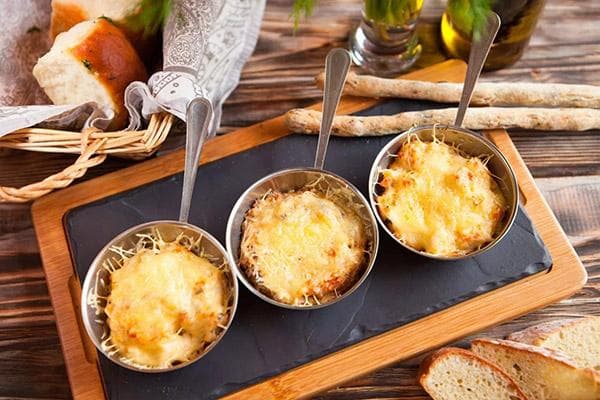
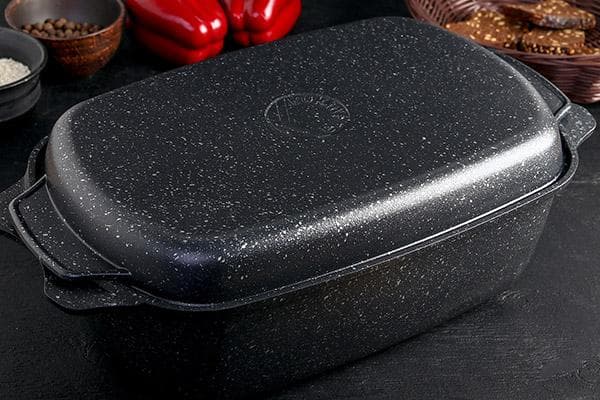
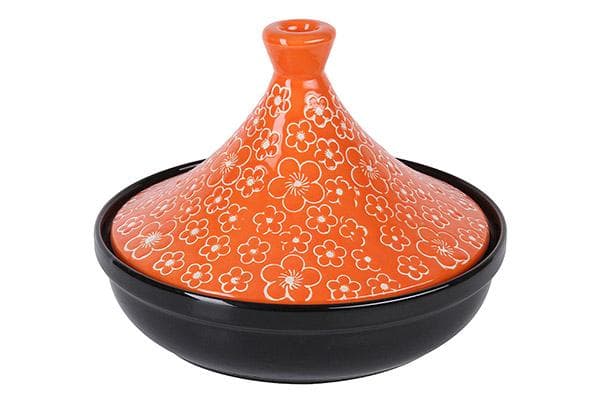
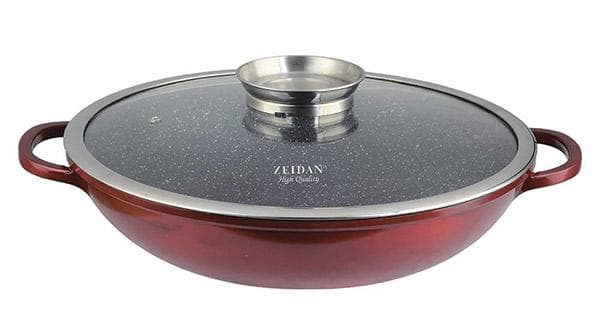
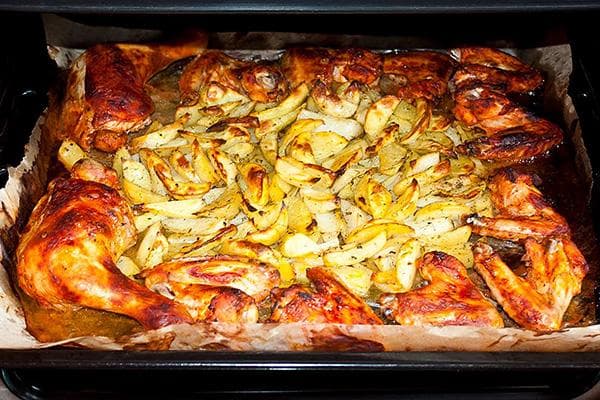
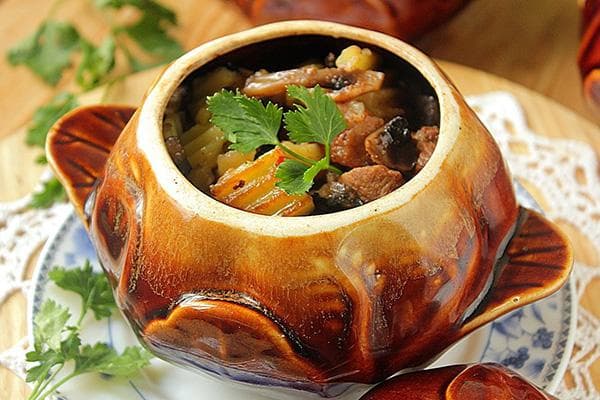

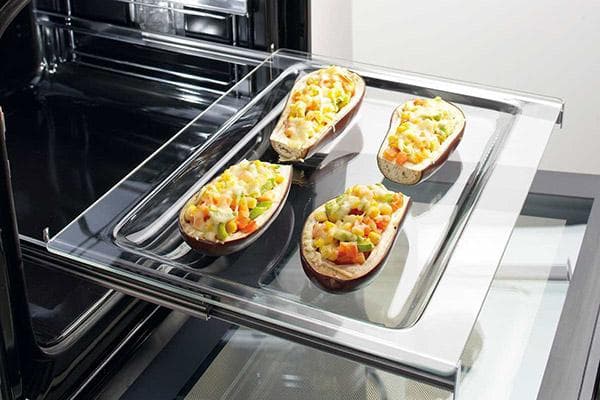
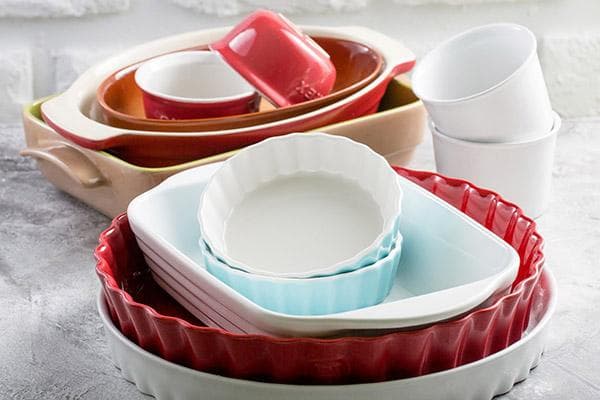
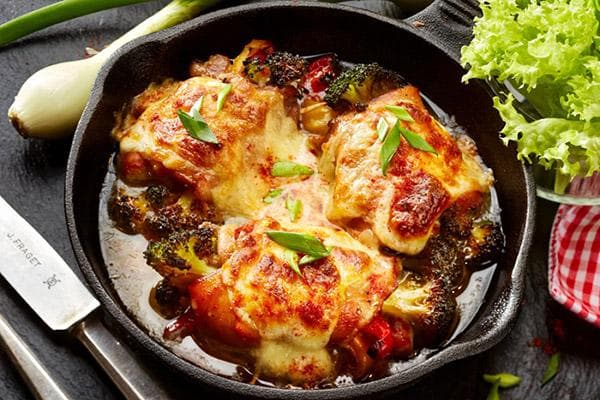
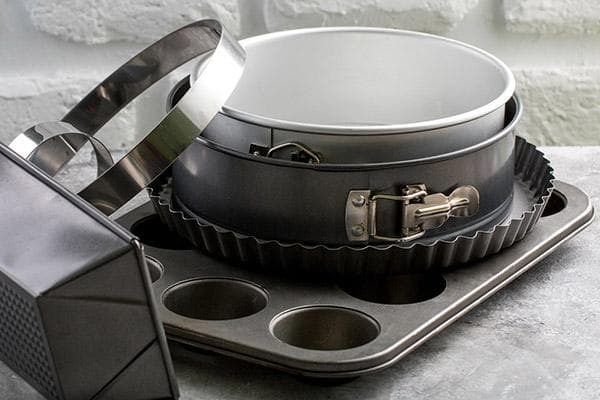
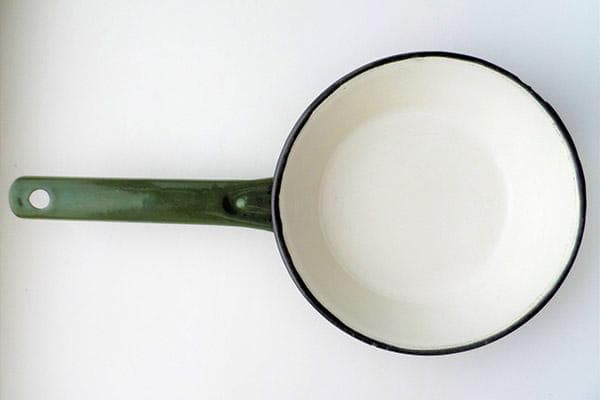
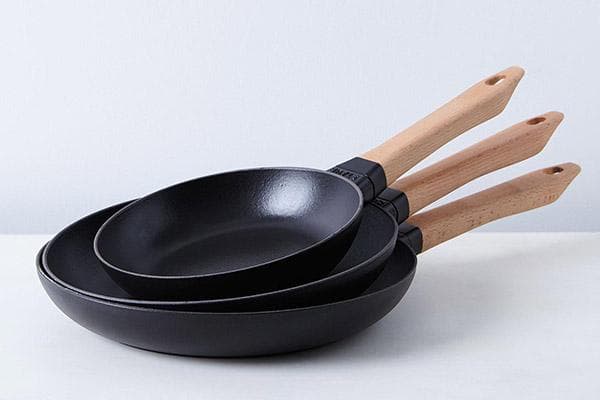
I read the article and bought a tagine. How did I cook without it before?! Everything turns out so delicious.